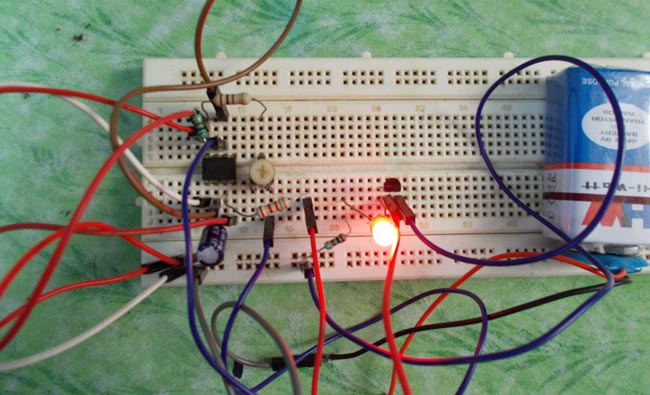AllenPitts
Newbie level 4

Hello EDABoard forum,
Working on system that will takes the 5v output from an Arduino and turns on eighteen LEDs.
So using a BD437g transistor because more current is needed than the Uno will output.
Having trouble working and understanding how the BD437g so a simple circuit was created

This circuit does not work.
It is surmised that ...Checker One doe not work because there is no
positive voltage to make the LED glow.
So a second circuit was designed and built:

Cant get this circuit to work either.
Perhaps the problem with ....Checker Two is both grounds are connected to the Emitter of the Q1.
But if only, say, the voltage source 1 is connected to the Q1 emitter where does the ground for the Source 2
go?
Is there a better way to approach the circuit. Have searched on line for a simple transistor
circuit to better understand how they work. Have found several circuits that use a 555 timer
as a transistor checker.

 www.elprocus.com
www.elprocus.com

 circuitdigest.com
circuitdigest.com
Hoped to build a very simple circuit that would demonstrate how the
the BD437g. Is there a simple way to refactor one of these circuits to
make the transistor turn the LED on?
Thanks.
Allen
Working on system that will takes the 5v output from an Arduino and turns on eighteen LEDs.
So using a BD437g transistor because more current is needed than the Uno will output.
Having trouble working and understanding how the BD437g so a simple circuit was created
This circuit does not work.
It is surmised that ...Checker One doe not work because there is no
positive voltage to make the LED glow.
So a second circuit was designed and built:
Cant get this circuit to work either.
Perhaps the problem with ....Checker Two is both grounds are connected to the Emitter of the Q1.
But if only, say, the voltage source 1 is connected to the Q1 emitter where does the ground for the Source 2
go?
Is there a better way to approach the circuit. Have searched on line for a simple transistor
circuit to better understand how they work. Have found several circuits that use a 555 timer
as a transistor checker.

Simple Transistor Tester Circuit for Bipolar Transistors
This article covers about simple transistor tester circuit or analyzer circuit, it is used for testing both PNP and NPN bipolar transistors with multimeter.

Transistor Tester using 555 Timer IC
Here is a simple 555 TIMER based circuit which will test the working of the transistor in seconds.
Hoped to build a very simple circuit that would demonstrate how the
the BD437g. Is there a simple way to refactor one of these circuits to
make the transistor turn the LED on?
Thanks.
Allen



